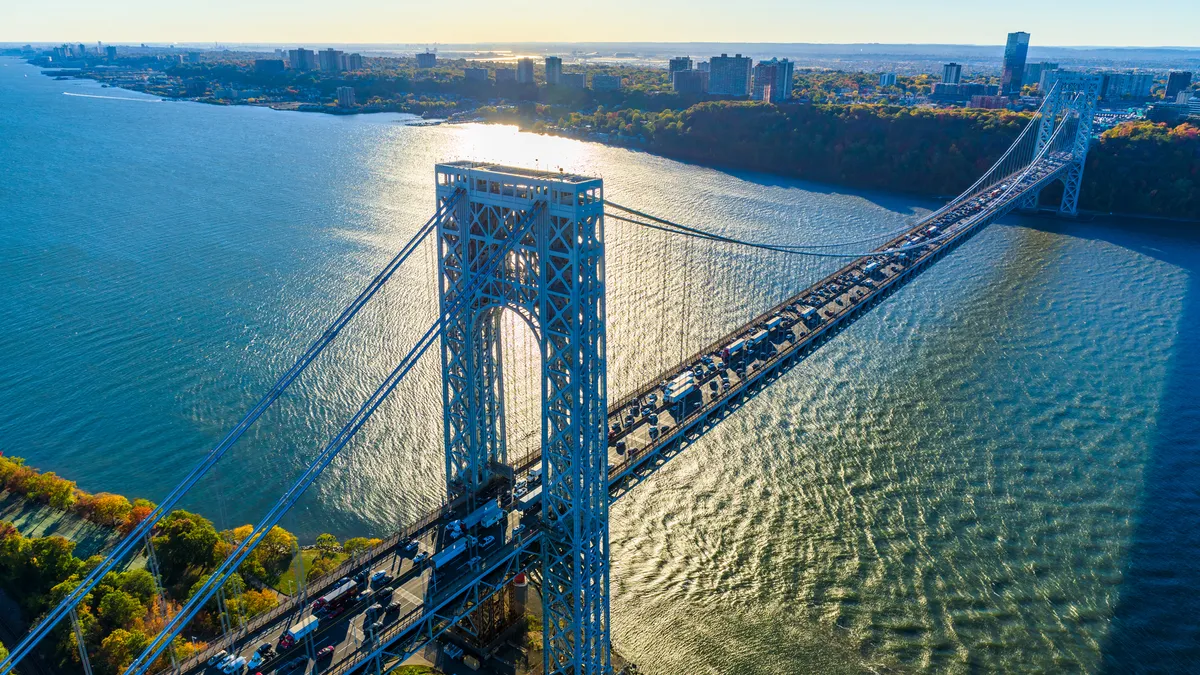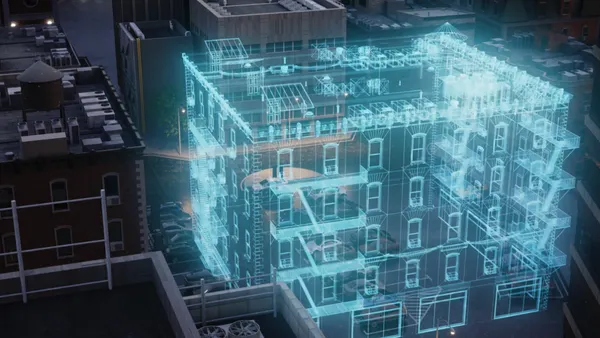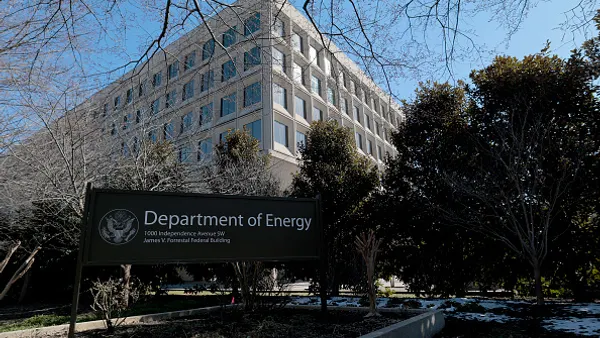Dive Brief:
- The Port Authority of New York and New Jersey rolled out a plan to reach net-zero carbon emissions by 2050.
- To reach its interim goals, the Port Authority is decarbonizing buildings, developing solar power in its facilities, buying more renewable energy and installing EV charging ports for customers, the agency noted in its net zero road map released Sept. 20.
- The agency said it is on track to cut Scope 1 and 2 direct emissions 35% by 2025, reduce those by 50% by 2030, and achieve a 100% reduction of scope 1, scope 2 and scope 3 emissions by 2050.
Dive Insight:
The Port Authority’s emissions reduction plan, which solidifies a commitment the agency made in 2021, seeks to align with the Biden-Harris administration’s climate goals, which include halving greenhouse gas emissions from 2005 levels by 2030, reaching 100% carbon-pollution-free electricity by 2035 and achieving net-zero emissions by 2050. The agency is aiming for a 50% reduction in direct emissions by 2030, and 100% reduction of scope 1, scope 2 and scope 3 emissions by 2050.
The Port Authority’s portfolio spans the John F. Kennedy, LaGuardia and Newark airports; the Lincoln and Holland tunnels; the Ports of New York and New Jersey; the World Trade Center, the George Washington Bridge and the Port Authority Trans-Hudson transit line linking Manhattan and New Jersey.
In addition to installing EV charging ports for customers, the Port Authority plans to transition its fleet of over 2,000 vehicles to zero-emission alternatives. That transition will require the agency to upgrade its electrical infrastructure, install EV chargers and test portable EV chargers and standalone solar-powered chargers for backup resiliency, it said. It has already installed 140 Level-2 charging ports at more than 25 locations to support fleet vehicles.
“The challenge that we are confronting is one that many large, complex organizations face: most emissions that result from Port Authority operations are from sources that are not owned or controlled by the Port Authority itself. In our case, approximately 96% of total emissions are outside of our direct control (Scope 3),” the Port Authority said.
The Port Authority’s building and facilities strategy will pursue energy efficiency retrofits and a transition away from fossil fuel use. Major redevelopment projects will use “the most efficient equipment and [be] designed to the latest sustainability standards.” Sustainable operations and maintenance best practices will optimize building performance across its facilities, the plan states.
The agency also said it would add its net zero goals into its tenant lease agreements, procurement processes, energy supply and waste management across all its facilities, including offices, retail properties and airports.
New York Gov. Kathy Hochul is advancing an ambitious state plan to reduce greenhouse gas emissions. New York’s Climate Act requires that 70% of the state’s electricity be generated from renewable sources by 2030, with the ultimate goal of achieving a 100% zero-emissions electricity by 2040. The fiscal year 2023-34 budget includes investments in sustainable buildings, furthering New York State’s push to develop new zero-emission structures. That includes expediting the transition to zero-emission designs in new buildings of up to seven stories by Dec. 31, 2025, and in all other new buildings by Dec. 31, 2028, Gov. Hochul’s office said in a Sept. 18 release.
Meanwhile, New Jersey Gov. Phil Murphy seeks to advance that state’s date for achieving 100% clean energy from 2050 to 2035. Murphy has set a building electrification goal of replacing fossil fuels with renewable sources in 20,000 commercial spaces and at least 400,000 residential structures by 2030. He said in the road map that the Port Authority’s plans align with the state’s clean energy goals.













